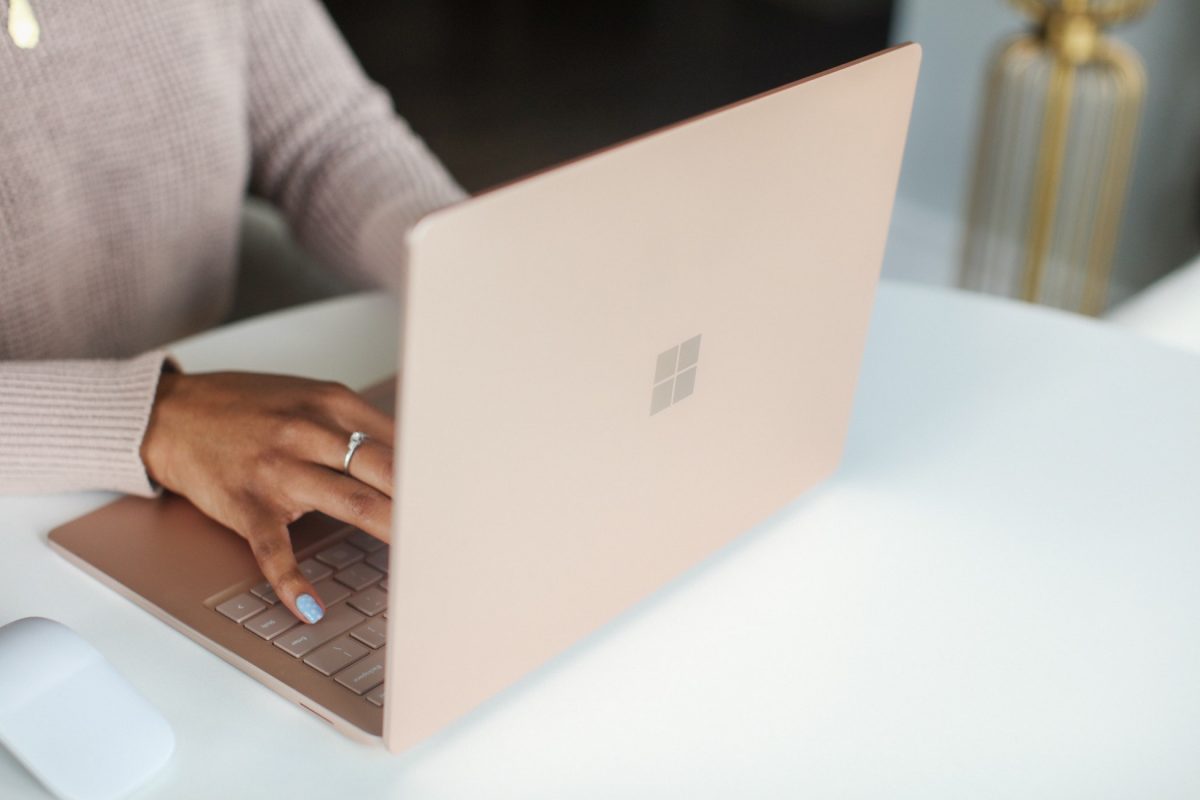Imagine a world where your child’s toy box doesn’t just hold Legos and action figures but also the seeds for a thriving financial future. Welcome to the wild and wonderful realm of IRA for Kids—a unique twist on traditional investing that not only builds serious wealth over time but also transforms the way millennials and Gen Z view money. In a time when financial literacy is as essential as knowing your favorite meme, this guide dives into how an IRA for Kids can set the stage for lifelong financial empowerment, explore its benefits and fees, and answer every burning question you never knew you had.
IRA for Kids: Benefits, Fees & Everything You Need to Know Table of Contents
Understanding the Fees Involved
How Does an IRA for Kids Work?
Steps to Open an IRA for Your Kid
Common Misconceptions About IRA for Kids
Legal Considerations and Parental Responsibilities
Resources and Community Support: Your Next Steps
Real-Life Stories: Early Investors Who Changed the Game
Innovative Investment Strategies for the Next Generation
Educational Tools and Financial Literacy Programs
Understanding IRA for Kids
At its core, an IRA (Individual Retirement Account) is a savings tool engineered for long-term financial health, and guess what? Kids can technically benefit from it too—if they have earned income! While the concept of setting up a retirement account for your little one might seem as unconventional as a TikTok financial guru, think of it as planting a money tree that grows while they’re still figuring out which app to download next.
An IRA for Kids is typically set up as a custodial IRA, managed by a parent or legal guardian until the child reaches adulthood. This account is usually a Roth IRA, which means your child pays taxes on their earnings up front, and their money grows tax-free—a big win in the era of minimizing tax burdens. By starting early, even small contributions can blossom into substantial nest eggs thanks to the magic of compounding interest.
Whether your child is making a few dollars from a paper route, acting in weekend commercials, or engaging in entrepreneurial ventures, the income can serve as a springboard into the fascinating world of investing. Establishing an IRA for Kids is not just about saving money; it’s about instilling a mindset of financial savvy that’s critical for navigating the complexities of modern economies.
Why Consider an IRA for Kids?
The concept of opening an IRA for a child might raise a few eyebrows (and maybe a chuckle or two), but it offers several compelling benefits that make it a strategic move for forward-thinking parents:
- Start Early with Compounding: Starting an IRA at a young age harnesses the power of compounding interest. Even modest contributions can grow exponentially over decades, setting your child up with a financial cushion for the future.
- Financial Education: Navigating an IRA gives kids a hands-on lesson in investing, budgeting, and the importance of long-term planning. It’s like an interactive finance class without the boring textbooks.
- Tax Advantages: Roth IRAs, which are the most common type for kids, allow for tax-free growth. Once your kid is ready to use their funds, they can withdraw the money without worrying about a tax bill on the earnings.
- Goal Setting & Discipline: Managing a retirement account from a young age teaches discipline and the value of long-term thinking—traits that are essential as they step into the adult world of financial independence.
- Parental Control: With custodial IRAs, parents or guardians manage the account until the child reaches adulthood, ensuring that the funds are securely invested and well-guided.
By embracing the idea of an IRA for Kids, you’re not merely investing money; you’re investing in your child’s financial education and long-term potential. It’s an educational journey that mixes fiscal responsibility with futuristic thinking—a theme that resonates perfectly with both millennials and Gen Zers.
Breaking Down the Benefits
Let’s get into the nitty-gritty of why an IRA for Kids could be a game-changer:
A Head Start on Retiring Rich
One of the most powerful benefits of an IRA for Kids is time. The earlier you start, the longer the funds have to grow through the simple yet astonishing mechanism of compounding interest. If you invest even a small amount regularly, those contributions can accumulate significant value over 40 or 50 years. It’s like giving your child a financial superpower before they even reach their teenage years.
The Magic of Tax-Free Growth
Traditional savings vehicles often come with strings attached—bonuses might be taxed, and interest might be subject to fees. With a Roth IRA, however, the focus is on tax-free growth. This means that while your child pays taxes on their modest earnings initially, any gains accrued in the account over time aren’t taxed. This setup can result in a robust fund that’s primed for major life events like college tuition, starting a business, or even a comfy retirement.
Empowering Financial Literacy
The benefits of an IRA for Kids extend beyond just numbers and charts. When children are introduced to the concept of investing through a hands-on account, they learn crucial financial lessons early on. Imagine the satisfaction of watching your teen track their investments, understand market fluctuations, and even maybe dive into discussions about index funds versus individual stocks—all skills that will serve them for a lifetime.
Building a Safety Net
And who doesn’t like a good safety net? Life is unpredictable, and having a solid financial backup plan is crucial. An IRA for Kids can serve as an emergency fund or as seed money for future investments. It’s a flexible resource that grows steadily in the background, providing financial security long before your child needs to think about retirement.
Inspiring Financial Independence
Perhaps the most significant benefit is the mindset it instills. Starting early with an IRA encourages a disciplined, long-term approach to money management. It reinforces the idea that every financial decision matters and that even small, consistent efforts can lead to monumental outcomes. This kind of mindset is priceless in a world where financial independence is increasingly tied to personal freedom and the ability to make meaningful life choices.
Understanding the Fees Involved
Just like with any financial tool, an IRA for Kids comes with its own fee structure and potential expenses. However, understanding these fees can help you make smart choices and avoid unnecessary costs.
Custodial Fees
A custodial account for an IRA is managed by a parent or guardian until the child reaches a specified age (usually 18 or 21, depending on state laws). Many financial institutions charge low annual maintenance fees for these custodial IRAs. Some providers offer fee-free accounts, so it’s worth shopping around to find the best option.
Management Fees
When you invest in a mutual fund, ETF, or any managed portfolio, you may incur management fees. These fees are typically expressed as a percentage of the assets in your account and can range from 0.1% to 1% or more per year. Over time, even small fees can add up, making it crucial to select investments with low expense ratios.
Trading Fees
Depending on the brokerage platform used, you might face trading fees every time you buy or sell investments within the IRA. Many brokerages today offer commission-free trading on a wide range of investments, but it’s always a smart move to double-check the fee structure.
Other Potential Costs
Additional costs might include account setup fees or fees for specialized services such as financial advising. It’s important to read the fine print and understand all possible fees before committing to an account.
While fees are a factor, remember that the ultimate goal is long-term growth. Many of the fees associated with custodial IRAs are relatively small compared to the benefits of starting early. By educating yourself and comparing costs across different financial institutions, you can minimize expenses and maximize the potential for sustained growth.
How Does an IRA for Kids Work?
The process of setting up and managing an IRA for Kids is straightforward, though it does require a bit of administrative legwork. Here’s a breakdown of what you need to know:
Eligibility and Earned Income
To contribute to an IRA—even a custodial IRA—the child must have earned income. That means any wages from a part-time job, freelance work, or family business must be reported as taxable income. It’s a great opportunity to teach your child the fundamentals of earnings, taxes, and record keeping. Even if the earnings are minimal, starting the habit early can build a strong foundation for fiscal responsibility.
Choosing the Right Type of IRA
While there are traditional IRAs and Roth IRAs, custodial IRAs for kids are predominantly Roth due to the following reasons:
- Tax Treatment: Contributions are made with after-tax dollars, allowing the money to grow tax-free over the decades.
- Flexibility: Roth IRAs offer more flexibility when it comes to withdrawals, which can be beneficial if the funds are needed for education or other major expenses later in life.
Account Setup and Management
Typically, you’ll need to choose a custodian—usually a parent or legal guardian—to open and manage the account until the child reaches adulthood. The process involves:
- Gathering necessary documentation (proof of income for the child, identification, and Social Security numbers).
- Choosing a reputable financial institution that offers custodial IRAs with low fees and good investment options.
- Filling out the required forms to open the account and deposit initial contributions.
- Selecting investments—such as low-cost index funds—that align with long-term growth objectives.
The beauty of this process is that, once the account is set up, it becomes a living classroom for your child—an opportunity to observe how disciplined investing works over time.
Monitoring and Growing the Account
Ongoing management of the IRA is important. Regularly reviewing your investments, rebalancing the portfolio, and reinvesting dividends are all part of the process. As your child grows older and begins to understand the basics of investing, you can involve them in these decisions, transforming the account into an invaluable financial education tool.
Steps to Open an IRA for Your Kid
Ready to embark on this investing adventure? Here’s a step-by-step roadmap to open an IRA for Kids:
Step 1: Verify Earned Income
Ensure that your child has earned income, regardless of how modest it may be. Gather all necessary documentation that proves income—pay stubs, tax documents, or any official records of wages.
Step 2: Choose the Right Custodian
As a parent or legal guardian, you’ll serve as the custodian. Research various financial institutions that offer custodial IRAs, paying close attention to fee structures, available investment options, and user-friendly interfaces that can help demystify the process for your child.
Step 3: Complete the Application Process
Once you’ve chosen a provider, complete their application process online or in person. Be prepared with all the necessary information, including your child’s Social Security number, proof of income, and identification documents.
Step 4: Fund the Account
Start with an initial contribution and plan for regular deposits. Even consistent small contributions can add up significantly over the years. Consider setting up automatic transfers from your bank account so you never miss a chance to invest in your kid’s future.
Step 5: Select Your Investments
Choose low-cost, diversified investment options that align with long-term growth. Many alarmingly catchy index funds and ETFs provide broad market exposure, reducing risk while maximizing returns over time. Teach your child what these investments mean—it’s an education that pays off.
Step 6: Monitor, Educate, and Adjust
Regularly review the performance of the IRA, educate your child about the ebb and flow of markets, and adjust your investment strategy as needed. This ongoing partnership in managing the IRA reinforces lessons about discipline, resilience, and the benefits of long-term planning.
Opening an IRA for Kids is more than just setting up another bank account—it’s a commitment to a future where financial literacy and smart investing are baked into the very fabric of your child’s upbringing.
Common Misconceptions About IRA for Kids
When it comes to IRA for Kids, there’s a lot of misinformation floating around online—often more confusing than your favorite meme’s hidden reference. Let’s bust some of these myths and clarify the facts:
Myth 1: IRA for Kids Means Kids Are Retiring Soon
Not quite. An IRA for Kids is all about the long game. The idea is to start early, taking advantage of decades of compounding growth, not to prepare for an early retirement. Think of it more as a secret stash of financial wisdom that they’ll cash in when the time is right.
Myth 2: Kids Can’t Have IRAs Because They Don’t Work
While it’s true that IRAs are typically associated with full-time work, any child with even a small amount of earned income qualifies for a custodial IRA. This setup is specifically designed to give kids a head start on their financial journey.
Myth 3: The Fees Outweigh the Benefits
While fees do exist, they are generally minimal compared to the long-term benefits of tax-free growth and compound interest. With careful planning and smart investment choices, the advantages drastically outweigh any small annual fees.
Myth 4: IRA for Kids is Too Complicated for Young Minds
The process might sound intimidating at first, but it’s actually quite straightforward. By breaking it down step-by-step and involving your child in decisions as they grow, the concept becomes both educational and engaging.
Dispelling these misconceptions is the first step in understanding the true potential of an IRA for Kids—one that can change the trajectory of your child’s financial future for the better.
Legal Considerations and Parental Responsibilities
Setting up an IRA for Kids isn’t just about dollars and cents—it also involves important legal responsibilities. As the custodian, you’re tasked with making decisions in the best interest of your child until they come of age.
The Role of a Custodian
A custodial IRA is managed by a designated adult until the child reaches legal adulthood. As the custodian, you are responsible for all transactions, investment decisions, and ensuring the funds are used responsibly. This arrangement balances the gift of financial independence with the guidance of experienced oversight.
Understanding Gift Taxes and Contributions
Contributions to an IRA for Kids must come from earned income, and there are legal limits on how much can be contributed each year. It’s essential to understand how these contributions work within the framework of federal tax laws, so consider consulting with a tax professional to make sure everything is compliant.
Transfer of Control and Future Responsibilities
When the child reaches the designated age, the custodial IRA typically converts into a traditional IRA or a Roth IRA in their own name. At that point, they take full control of the account—which makes it all the more important to instill sound financial habits early on.
Handling these legal nuances with care not only safeguards your child’s current funds but also lays the groundwork for ethical money management in the future.
Resources and Community Support: Your Next Steps
Embarking on the journey of setting up an IRA for Kids is an exciting endeavor, but it doesn’t have to be a solo mission. There are numerous resources and vibrant communities out there eager to help you navigate this financial frontier.
Online Financial Education Platforms
Websites and apps like Investopedia, NerdWallet, and The Motley Fool offer in-depth articles, videos, and tutorials on everything from basic investing concepts to advanced portfolio strategies. These platforms can be invaluable in bridging the knowledge gap for both you and your child.
Financial Advisors and Tax Professionals
If you’re new to investing or have questions about the legalities associated with custodial IRAs, consider connecting with a financial advisor or tax professional. Their expertise can help clarify any uncertainties and ensure you’re setting up the account for long-term success.
Local Workshops and Webinars
Many community centers, libraries, and financial institutions offer free or low-cost workshops on investing and financial planning. These events can be a great way to meet like-minded parents, ask questions, and learn from experts in a supportive environment.
Parenting Forums and Social Media Groups
Don’t underestimate the power of community support. There are countless online forums and social media groups where parents exchange tips, share success stories, and discuss challenges related to setting up IRAs for kids. Platforms like Reddit, Facebook, and specialized parenting sites can provide real-time advice and opportune insights.
By leveraging these resources, you not only enhance your own financial literacy but also set an example for your child. Engaging with a community that values financial well-being helps reinforce the lessons of smart investing and long-term planning, creating a ripple effect that benefits everyone involved.
Real-Life Stories: Early Investors Who Changed the Game
Sometimes, hearing success stories can make all the difference. Here are some real-life examples of early investing in IRAs that turned small beginnings into financial triumphs:
Story 1: The Young Entrepreneur
Meet Alex, a teenager who started earning money through a small business offering website design services. With guidance from his parents, he channeled his earnings into a custodial Roth IRA. Over the years, as his business flourished alongside his steadily growing IRA, Alex not only learned the value of money but also built a strong financial foundation that set him up for college—and beyond.
Story 2: A Star in the Making
Emily, a young actress with occasional roles in local theater productions, began channeling her earnings into an IRA from a very early age. With the power of compounded growth and consistent contributions, Emily’s account ballooned into a formidable nest egg. Her story is a reminder that even non-traditional careers can provide the income necessary to kickstart financial independence.
Story 3: The Saver Turned Investor
When Ryan got his first allowance and part-time work experience, his parents taught him about the magic of investing by opening a custodial IRA. Over time, Ryan nurtured his account through regular contributions and even experimented with small investments in low-cost ETFs. As he matured, so did his understanding of the market, proving that early financial education reaps lifelong rewards.
These stories aren’t just anecdotes—they’re proof that starting early, no matter how modest the beginnings, can lead to extraordinary financial outcomes. They serve as an inspiration not only to children but to all of us who aspire to build a secure financial future.
Innovative Investment Strategies for the Next Generation
As the financial landscape continues to evolve, so do the investment strategies available to savers of all ages—including our youngest investors. Here are some innovative approaches that can complement an IRA for Kids:
Dollar-Cost Averaging
Instead of trying to time the market perfectly, dollar-cost averaging involves making regular, fixed contributions to the IRA regardless of market conditions. This method not only smooths out the price fluctuations but also inculcates an important habit of consistent investing.
Index Fund Investing
Index funds are a favorite among savvy investors for a reason—they offer diversified exposure to the market at low costs. By investing in an index fund within the IRA, you’re essentially betting on the overall growth of the economy. This strategy pairs well with long-term investment horizons and is perfect for a young investor’s perpetual journey.
Rebalancing and Portfolio Diversification
As the investment grows, periodic rebalancing ensures that the portfolio aligns with the desired risk profile and long-term goals. Diversifying across different asset classes—stocks, bonds, and even low-risk alternatives—can help mitigate risk while capitalizing on various market opportunities.
Tech Innovations: Automated Investing Platforms
With the advent of robo-advisors and automated investing platforms, managing an IRA has never been easier. These platforms use algorithms to create and maintain a well-diversified portfolio based on your investment goals and risk tolerance. They’re especially appealing to the younger generation, who are used to digital solutions that are both efficient and user-friendly.
Incorporating these strategies not only enhances the growth potential of the IRA but also serves as a practical lesson in modern investing—ensuring that your child is well-equipped to navigate the financial world of tomorrow.
Educational Tools and Financial Literacy Programs
The beauty of an IRA for Kids isn’t just in its ability to grow wealth—it’s also an educational tool that can revolutionize how your child views money, saving, and investing. With so many innovative resources at your disposal, teaching financial literacy has never been more accessible or engaging.
Interactive Investment Apps
There are a plethora of apps designed to simplify the investing process through gamification. These platforms allow kids and teens to simulate investment scenarios, track real-life indexes, and even compete in virtual trading contests. By introducing your child to these tools, you create an entertaining environment where learning about stocks, bonds, and mutual funds becomes second nature.
Financial Literacy Workshops
Many schools and communities now offer workshops and classes focused on financial education. Topics range from the basics of budgeting to more advanced discussions about investments and economic trends. Enrolling your child in such programs can complement the practical lessons learned through an IRA, combining theory with hands-on experience.
Books, Podcasts, and Online Courses
The internet is brimming with free and affordable resources that break down complex financial topics into digestible content. Whether it’s a fun podcast hosted by young financial influencers or an online course on investing basics, these tools can help reinforce good money habits. Make learning about finance as routine as checking social media—it might just become your child’s favorite subject.
By utilizing these educational resources, you’re not just creating a fund for your child—you’re also building their confidence to make savvy financial decisions, a lesson that will benefit them in every aspect of life.
IRA for Kids: Frequently Asked Questions
We’ve covered a lot of ground, but we know you might still have questions about this innovative savings tool. Here are some of the most common questions answered in a straightforward, relatable way.
1. What exactly is an IRA for Kids?
An IRA for Kids is a custodial Individual Retirement Account set up by a parent or guardian for a child with earned income. Typically offered as a Roth IRA, it allows your child’s contributions to grow tax-free over time.
2. How can my child qualify for an IRA?
Your child must have earned income from a part-time job, freelance work, or similar activities. The income must be documented, and contributions are limited to the amount of earned income in a given year.
3. What are the benefits of starting an IRA early?
Early investing harnesses the power of compounding interest, provides tax advantages through a Roth IRA, and instills financial literacy and discipline that can last a lifetime.
4. Are there significant fees associated with a custodial IRA?
While some fees exist, such as custodial or management fees, many institutions offer low-cost or even fee-free options. The long-term benefits of tax-free growth typically far outweigh the small fees involved.
5. Can my child learn about investing through this account?
Absolutely! Managing an IRA offers practical lessons in saving, investing, and understanding market risks—transforming abstract financial theories into tangible experiences.
6. What if the market dips drastically—will my child lose money?
Investing always comes with risk. However, a diversified portfolio and a long-term perspective can help mitigate short-term losses. The key is to view market fluctuations as normal parts of the investing cycle.
7. Can the funds be used for other purposes besides retirement?
Although the primary purpose of an IRA is retirement savings, Roth IRAs offer some flexibility. Under certain circumstances, such as higher education expenses or a first home purchase, funds can be withdrawn penalty-free.
8. How involved should I be in managing my child’s IRA?
As the custodian, you manage the account until your child comes of age. It’s ideal to involve your child gradually, teaching them about financial decisions and investment options along the way.
9. Is it ever too early to start investing?
There’s no such thing as “too early” when it comes to investing. The sooner you start, the more time your money has to grow, creating a strong foundation for financial freedom.
10. How do I get started?
Begin by verifying your child’s eligibility with earned income, research custodial IRA providers, and set up the account with clear, consistent contributions. Over time, educate your child and incorporate them in managing their growing fund.
Your Journey to Financial Empowerment
Embracing an IRA for Kids is more than just another financial decision—it’s a bold step toward securing your child’s future and fostering a mindset of financial empowerment. By starting early, you tap into the extraordinary power of compounding interest, provide valuable tax advantages, and cultivate a culture of disciplined saving and investing.
As you watch your child’s IRA grow alongside their knowledge and understanding of the financial world, you’re witnessing the birth of a new era of financial literacy and independence. Each contribution, every lesson learned, and all the milestones reached become building blocks in the foundation of a financially savvy future.
Whether you’re a millennial parent armed with modern technology or a Gen Z guardian who values a balanced, informed approach to money management, an IRA for Kids can set the stage for a lifetime of smart financial choices. With the guidance of experts, the support of communities, and the innovative resources available today, you’re well-equipped to help your child navigate the exciting, sometimes unpredictable, world of investing.
So, take that leap of faith. Open an IRA for your child, educate them on every twist and turn of the financial markets, and watch as small contributions blossom into a financial legacy that can support dreams, fund adventures, or provide a safety net when it’s needed most. This isn’t just about saving money—it’s about fostering confidence, resilience, and the skills to thrive in an ever-changing economic landscape.
Your journey to financial empowerment starts now. Embrace the adventure, celebrate every success, and let your child be a testament to the power of early investing. The road ahead is long and full of opportunities—each step is a stride towards a future where financial freedom isn’t just a dream, but a reality built on wise decisions and enduring growth.













